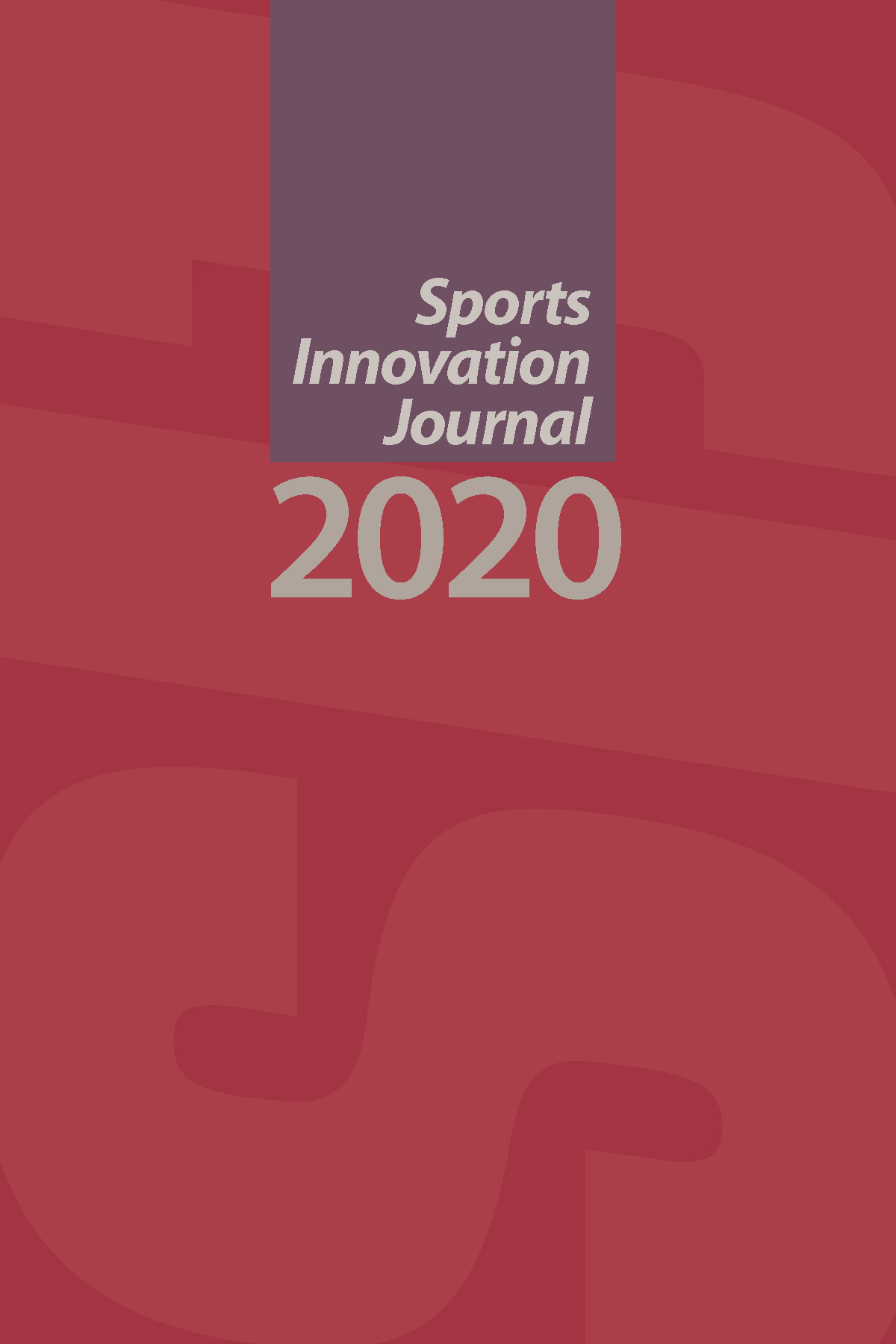Going All in on AI
Examining the Value Proposition of and Integration Challenges With One Branch of Artificial Intelligence in Sport Management
DOI:
https://doi.org/10.18060/23898Keywords:
big data, innovation, digital sport, automation, natural language processingAbstract
The sport industry has become increasingly more complex with the expanse of digital technology such as fiber optic internet access, 5G wireless communication, and blockchain, just to name a few. These advancements have shifted the amount and variety of data produced and available for analysis by sport organizations. Yet, sport organization front offices remain well behind other industry segments (e.g., retail, communications) in regard to handling, processing, and analyzing the volume and variety of data to advance business objectives. In this brief, we introduce the notion of artificial intelligence (AI) to sport management. While AI, as a concept, has been discussed for more than 50 years, this article provides a definition and overview of its historical trajectory for sport managers. Concurrently, the article also identifies the value proposition for AI capability, notably the natural language processing across four customer-centered domains: 1) listening to the public narrative, 2) automating the sales process, 3) computerized consumer content, and 4) self-operating service. Integration challenges are also addressed for sport organizations as they seek to increase their digital competence, achieve competitive advantage through technical innovations, and ultimately become more efficient in a data-driven world.
References
Brooks, R. (2017). The seven deadly sins of AI predictions. MIT Technology Review. Retrieved
from https://www.technologyreview.com/s/609048/the-seven-deadly-sins-of-ai-predictions/
Café, L. M. A., & Souza, R. R. (2017). Sentiment analysis and knowledge organization: An overview of the international literature. Knowledge Organization, 44, 199-214. doi:10.5771/0943-7444-2017-3-199
Conversica. (2020). How the Sacramento Kings added millions in pipeline with Conversica. Conversica. Retrieved from https://www.conversica.com/resources/videos/how-the-sacramento-kings-added-millions-in-pipeline-with-conversica/
Facebook. (2020). Pepsi Thailand: Increasing brand awareness with a bot for Messenger. Facebook for Business. Retrieved from https://www.facebook.com/business/success/pepsi-thailand
Funk, D. C. (2017). Introducing a sport experience design (SX) framework for sport consumer behaviour research. Sport Management Review, 20, 145-158. doi:101016/j.smr.2106.11.006
Haenlein, M., & Kaplan, A. (2019). A brief history of artificial intelligence: On the past, present, and future of artificial intelligence. California Management Review, 61, 5-14. doi:10.1177/0008125619864925
Hirschberg, J., & Manning, C. D. (2015). Advances in natural language processing. Science,
349, 261-266.
Hoeber, L., & Hoeber, O. (2012). Determinants of an innovation process: A case study of technological innovation in a community sport organization. Journal of Sport Management,
Islam, T. (2019, September 12). Making AI real. Symposium conducted at the SAS Road2AI for technology experts, Melbourne, Australia.
Kang, S. (2017). Mobile communication and pro sports: motivation and fan loyalty. International Journal of Mobile Communications, 15, 604-627.
Kaplan, A. M., & Haenlein, M. (2010). Users of the world, unite! The challenges and opportunities of social media. Business Horizons, 53, 59-68. doi:10.1016/j.bushor.2009.09.003
Kaplan, A. M., & Haenlein, M. (2019a). Digital transformation and disruption: On big data, blockchain, artificial intelligence, and other things. Business Horizons, 62, 679–681. doi:10.1016/j.bushor.2019.07.001
Kaplan, A., & Haenlein, M. (2019b). Siri, Siri, in my hand: Who’s the fairest in the land? On the interpretations, illustrations, and implications of artificial intelligence. Business Horizons, 62, 15-25. doi:10.1016/j.bushor.2018.08.004
Kitchin, R. (2014). The data revolution: Big data, open data, data infrastructures & their consequences. London, England: SAGE.
Lemire (2018). Minute can automatically generate sports video teasers in real-time. SportTechie. Retrieved from https://www.sporttechie.com/minute-can-automatically-generate-sports-video-teasers-in-real-time
Lemire, J. (2019). Team Altemus uses AI to help pro athletes find a financial advisor. SportTechie. Retrieved from https://www.sporttechie.com/team-altemus-nfl-nba-ai-financial-adviser-exiger-ddiq
Legg, S., & Hutter, M. (2007). Universal intelligence: A definition of machine intelligence. Minds and Machines, 17, 391-444.
Mach, J. (2019, September 22). Is Skynet really the future of artificial intelligence? Medium. Retrieved from https://medium.com/datadriveninvestor/is-skynet-really-the-future-of-artificial-intelligence-83b7d6ad0d05
McDonald, H., Karg, A. J., & Leckie, C. (2014). Predicting which season ticket holders will renew and which will not. European Sport Management Quarterly, 14, 503-520. doi:10.1080/16184742.2014.944199
McKinsey. (2016). The need to lead in data and analytics. [online] p.1-9. Retrieved from
https://www.mckinsey.com/business-functions/digital-mckinsey/our-insights/the-need-to-
lead-in-data-and-analytics
Millar, P., & Doherty, A. (2018). “You can’t just start and expect it to work”: An investigation of strategic capacity building in community sport organizations. Journal of Sport Management, 32, 348-361. doi:10.1123/jsm.2017-0233
Misener, K., & Doherty, A. (2009). A case study of organizational capacity in nonprofit community sport. Journal of Sport Management, 23, 457-482. doi:10.1123/jsm.23.4.457
Naraine, M. L. (2019). The blockchain phenomenon: Conceptualizing decentralized networks and the value proposition to the sport industry. International Journal of Sport Communication, 12, 313-335. doi:10.1123/ijsc.2019
Naraine, M. L., & Parent, M. M. (2017). This is how we do it: A qualitative approach to national sport organizations’ social-media implementation. International Journal of Sport Communication, 10, 196-217. doi:10.1123/IJSC.2017-0006
Naraine, M. L., Wear, H. T., Whitburn, D. J. (2019). User engagement from within the Twitter community of professional sport organizations. Managing Sport and Leisure, 24, 275-293. doi:10.1080/23750472.2019.1630665
Parent, M. M., Naraine, M. L., & Hoye, R. (2018). A new era for governance structures and processes in Canadian national sport organizations. Journal of Sport Management, 32, 555-566. doi:10.1123/jsm.2018-0037
Shilbury, D., Westerbeek, H., Quick, S., Funk, D., & Karg, A. (2014). Strategic sport marketing (4th ed.). Crows Nest, Australia: Allen & Unwin.
Slack, T., & Parent, M. M. (2006). Understanding sport organizations (2nd ed.). Champaign, IL: Human Kinetics.
Taks, M., Séguin, B., Naraine, M. L., Thompson, A., Parent, M. M., & Hoye, R. (2020). Brand governance practices in Canadian national sport organizations: an exploratory study. European Sport Management Quarterly, 20, 10-29. doi:10.1080/16184742.2019.1690538
Tredinnick, L. (2017). Artificial intelligence and professional roles. Business Information Review, 34, 37-41. doi:10.1177/0266382117692621
Turing, A. (1950). Computing machinery and intelligence. Mind, 59, 433-460
Yan, G., Watanabe, N. M., Shapiro, S. L., Naraine, M. L., & Hull, K. (2019). Unfolding the Twitter scene of the 2017 UEFA Champions League Final: social media networks and power dynamics. European Sport Management Quarterly, 19, 419-436. doi:10.1080/16184742.2018.1517272
Published
Issue
Section
License
Copyright (c) 2020 Michael L. Naraine, Liz Wanless

This work is licensed under a Creative Commons Attribution 4.0 International License.
Copyright to articles published in Sport Innovation Journal is retained by the author(s).


